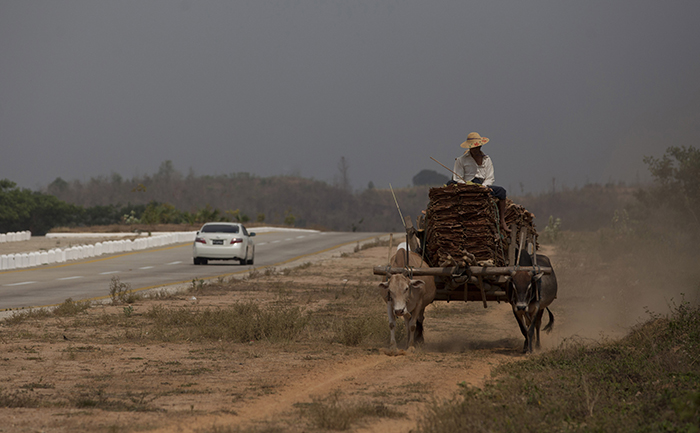
The Burmese government plans to build expressways and roads over the next 20 years based on a master plan for Myanmar's national road network, put together by a consortium of Korean enterprises with funding from the Korea International Cooperation Agency (KOICA). Myanmar currently has only one highway that connects the commercial capital, Yangon, with the administrative capital, Nay Pyi Taw.
This year the Burmese government will begin construction of an integrated road network, using as its blueprint the Master Plan for Myanmar's Expressways and Arterial Roads, put together by a consortium of Korean engineering firms. The roads will be built over the next 20 years.
The Yooshin Consortium worked on the master plan in cooperation with the Burmese government from 2013 to 2015 as part of the Korea International Cooperation Agency's grant program. The road network development plans outline 34,378 kilometers of highways and roads. The master plan also provides advice on developing road networks, managing traffic demand, implementing strategies and guidelines as to financing.
As Myanmar currently has just one highway that connects the commercial capital Yangon with the administrative capital Nay Pyi Taw, and as many of the country's roads remain unpaved, the new road network will greatly improve the country's infrastructure.
In addition to supporting the construction of Burmese roads, the Korean government has been using funds from the Economic Development Cooperation Fund (EDCF) to invest in the Korea-Myanmar Friendship Bridge. Upon completion, the bridge will connect Yangon with the townships of Dala, a region south of the city, and help to relieve traffic jams.
The Export-Import Bank of Korea also has another EDCF project on the way that will develop a long-distance, 500 kilovolt power grid system between Taungoo and Kamanat, two cities in the Bago region of Myanmar. The new grid will lay the groundwork for a transmission network that will span the 188 kilometers between the two points. Once built, it will alleviate electricity shortages in the cities that lie in southern Yangon Region.
By Lee Hana
Korea.net Staff Writer
Photo: Yonhap News
hlee10@korea.kr